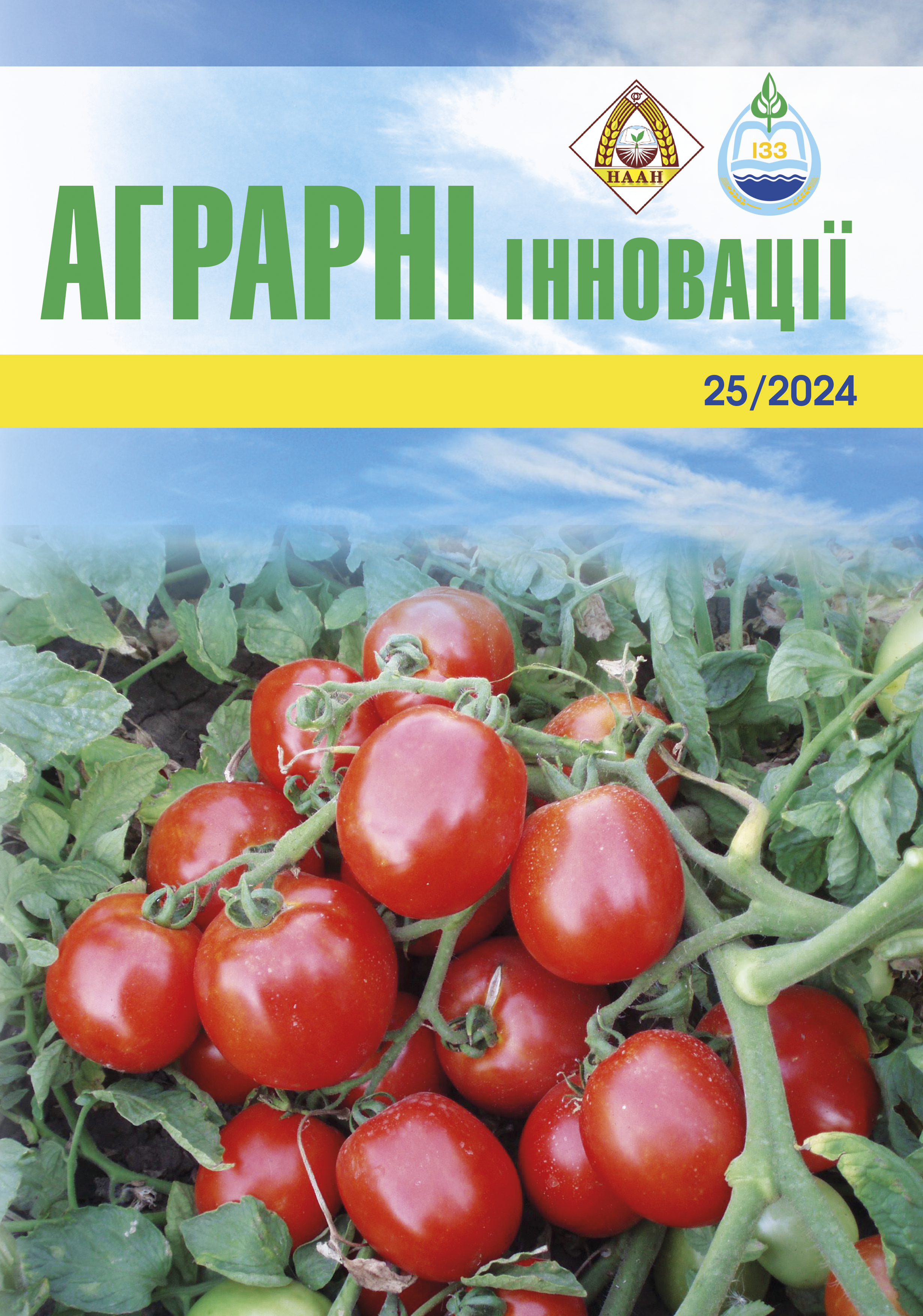Yield and quality of the best constant breeding lines of winter wheat of the preliminary variety trial of the unus selection
Abstract
Purpose. To determine the formation of yield and the manifestation of the main economically useful traits of constant selection lines of winter wheat in the preliminary variety test. Methods. Field and laboratory methods for studying the variability of economic and valuable characteristics of winter wheat, mathematical methods for the reliability of the obtained data. In the process of conducting research, general scientific and special methods were used: field, which was supplemented by laboratory, to establish the relationship between the object of research and measures of influence on it; mathematical and statistical – to determine thereliability of the obtained results. Results. Breeding lines, after creation, undergo severe selection from year to year until they reach a constant state, that is, hybrid combinations must completely complete the splitting state. Realization of the possibilities of creating new varieties of plants taking into account climate changes requires strengthening and expanding the adaptive potential in the selection of selection goals and methods, as well as ensuring the functional connection of the selection trial, seed and agrotechnical stages. Analysis of the adaptive properties of varieties and lines of soft wheat by yield using different methodological approaches leads to practically identical results regarding the selection of the best varieties. Conclusions. In the experiment, 5 promising breeding lines were selected, which exceeded the standard variety Orzhitsia nova by 0.01 to 0.84 t/ha. The rest of the SL was culled, and re-selection was carried out in them, and the material will be returned to the breeding nurseries. Selection lines N 59, N 50, N 109, N 125 had the highest yield in 2022, in which the yield ranged from 3.92 to 4.54 t/ha. It was established that the yield of the researched selection lines was formed in 2023, the range from 4.42 t/ha to 5.59 t/ha. Special attention for further testing in the competitive variety test is represented by selection lines, which during 2 years of research had a significant yield increase in relation to the standard. Over two years, the yield over the standard variety Orzhitsia novaranged from 0.14 to 1.12 t/ha. The selection lines N 60, N 65, whose protein content is 15.4–15.9%, deserve attention in terms of grain quality.
References
С. 1–6.
2. В.Т. Александров та ін. Зерновий та хлібопродуто-вий товарообіг в Україні: енцикл. довід.: АртЕк, 2000. 544 c.
3. Гадзало Я.М., Кириченко В. В., Дзюбецький Б. В. Стратегія інноваційного розвитку селекції і насінни-цтва зернових культур в Україні: наук. вид. КиївХарків–Дніпро. 2016. 32 с.
4. Баган А. В., Юрченко С. О., Шакалій С. М. Мінливістьпотомства різних морфологічних частин колоса сотів пшениці озимої за кількісними ознаками. Вісник
Полтавської державної аграрної академії. 2012.No 4. С. 33–355.
5. Сайко В. Ф. Перспективи виробництва зерна в Україні. Вісник аграрної науки. 1997. No 9. С. 27–32.
6. Бурденюк-Тарасевич Л. А., Лозінський М. В., Дубова О. А. Особливості формування довжини стбла у селекційних номерів пшениці озимої залежно від
їх генотипів та умов вирощування. Агробіологія.2015. No 1. С. 11–15.
7. Egamov I. U., Siddikov R. I., Rakhimov T. A., Yusupov N. K. Creation of high-yielding winter wheat varieties with high yield and grain quality suitable for
irrigated Conditions. International Journal of Modern Agriculture. 2021. No 10(2). Р. 2491– 2506.
8. M. Lozinskiy et al. Evaluation of selected soft winter wheat lines for main ear grain weight. Agronomy
Research. 2021. Vol. 19. No 2. Р. 540–551. DOI: 10.15 159/ar.21.071
9. С. О. Хоменко та ін. Адаптивний потенціал вихідного матеріалу для селекції пшениці м’якої ярої. Фактори
експериментальної еволюції організмів. 2017. Вип. 21. С. 221–224. DOI: 10.7124/FEEO.v21.839
10. В. М. Гудзенко та ін. Селекція ячменю ярого на під-вищення продуктивного та адаптивного потенціалу.Селекція і насінництво. 2017. Вип. 111. С. 51–60.
11. Лозінський М. В., Бурденюк-Тарасевич Л. А., Дубова О. А. Типи успадкування кількості зерен з рос-
лини у гібридів F1 і формотворчий процес в гібридних популяціях F2 пшениці м’якої озимої, отриманих від гібридизації різних екотипів. Агробіологія. 2016.
No 2(128). С. 45–51. URL: http://rep. btsau.edu.ua/
handle/BNAU/1579
12. Бурденюк-Тарасевич Л. А., Лозінський М. В. Принципи підбору пар для гібридизації в селекції озимої пшениці T. aestivum L. на адаптивність до умов довкілля. Фактори експериментальної еволюції організмів. 2015. Т. 16. С. 92–96.
13. Животков Л. О., Шелепов В. В., Коломієць Л. А., Чебаков М. П. Завдання, методи, результати селекції інтенсивних сортів озимої пшениці. Генетика і селекція в Україні на межі тисячоліть: у 4 т. / редкол.: В. В. Моргун (гол. ред.) та ін. Київ : Логос, 2001. Т. 2. С. 394–397.






